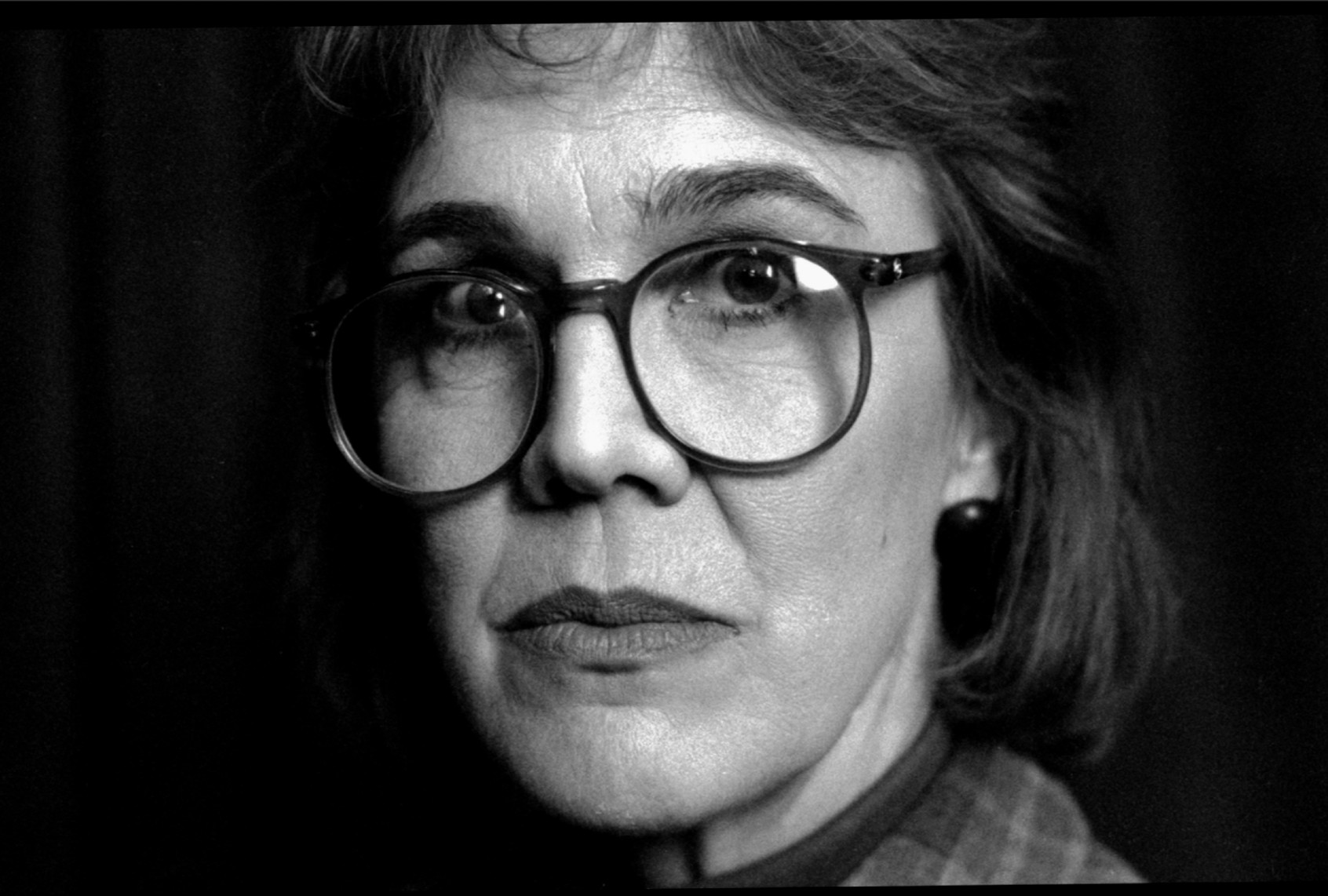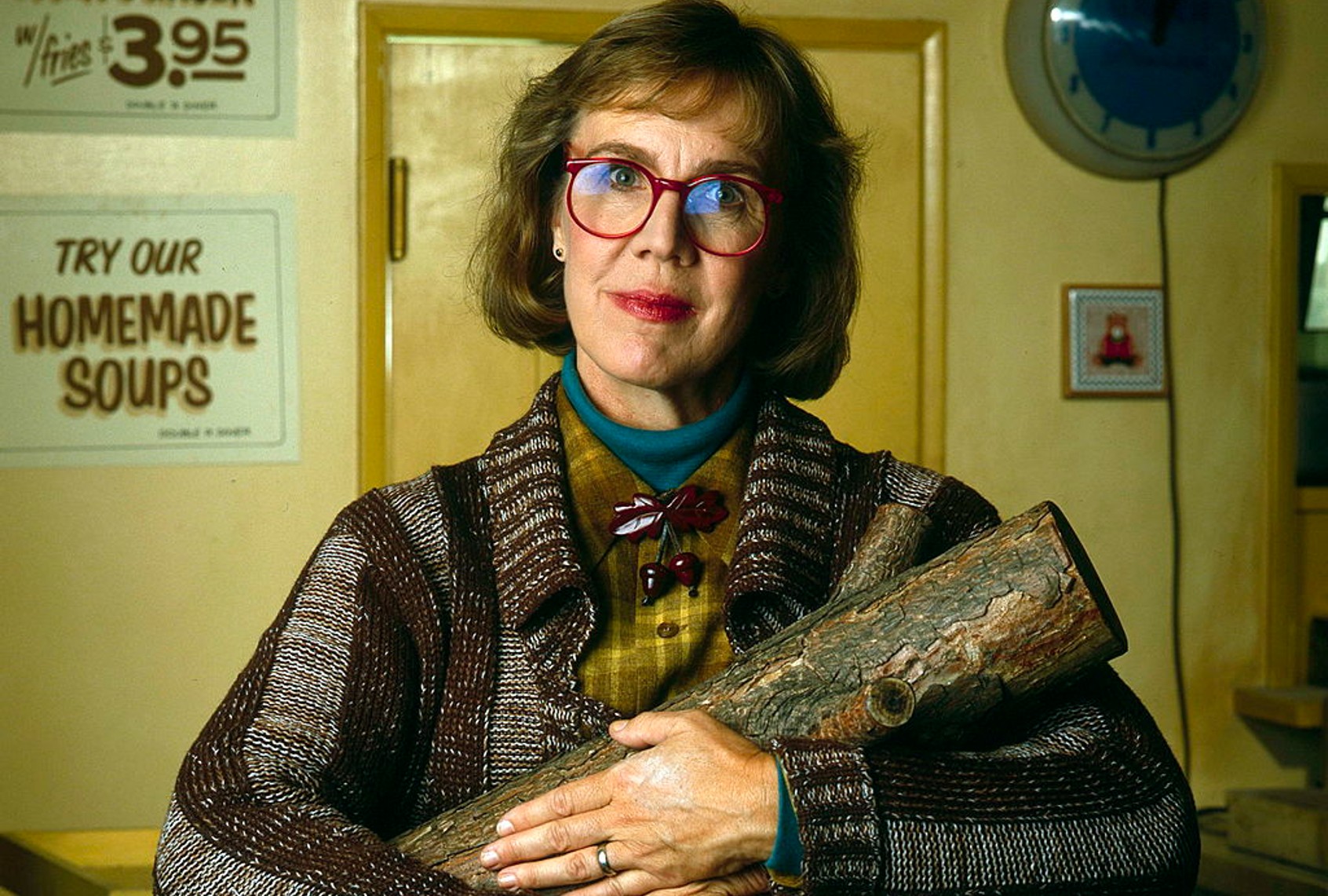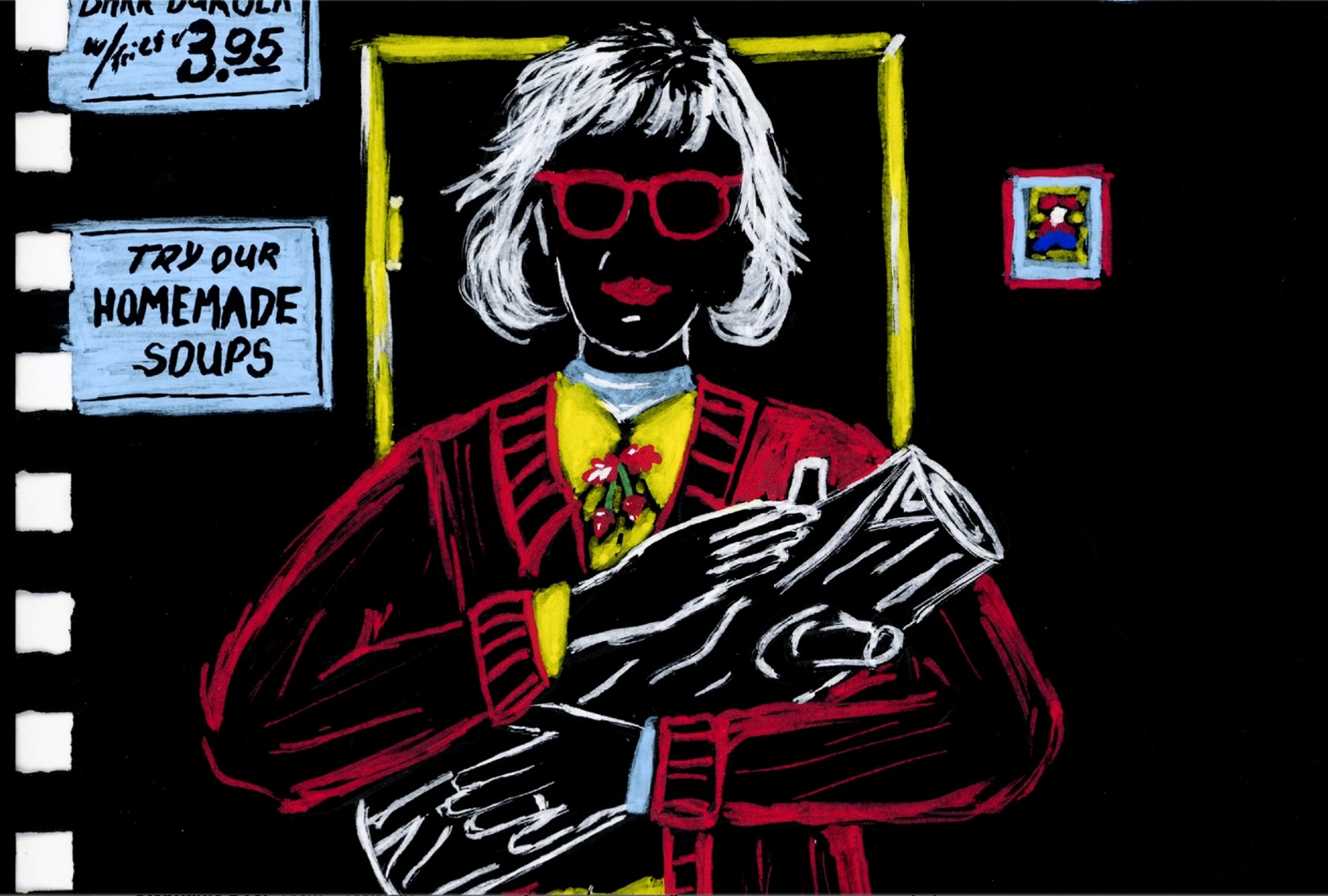In the days immediately following David Lynch’s death, fans of the auteur and artist were bereft, unsure of how to express their outpouring of grief for someone they didn’t know personally but had a strong, lifelong emotional connection to. They sold out repertory screenings of his films at theaters, dug into his lesser-known works and left small trinkets of appreciation outside Bob’s Big Boy — Lynch’s favorite Los Angeles eatery. The tributes continued for weeks, but with someone as prolific as Lynch, the hole remains no matter how we try to fill it. In death, we all want a little more, something that will preserve and connect us to our memories; something that will make our lives mean something. Lynch was never one for nihilism. His work sought to find the details that made each person special or different, no matter how small, minute or even evil they might be.
For all of the debate over the messages within Lynch’s oeuvre — especially his most famous work, “Twin Peaks” — he never disguised his humanism. It appears plainly throughout his career, but perhaps never so clearly as in one of the Log Lady introductions. These vignettes, which preceded the 1993 syndicated reruns of “Twin Peaks” after the show was canceled, feature one of the show’s most familiar and adored characters, Margaret Lanterman, aka the Log Lady, who was played by Lynch’s longtime friend and collaborator, Catherine Coulson. In the intros, which were all written and directed by Lynch, Margaret sits in her cabin speaking directly to the camera, delivering a stoic message that vaguely relates to the episode that will follow it. In the Log Lady intro for the series’ second episode, Margaret asks the viewer: “Do we have time to learn the reasons behind human beings’ varied behavior? I think not. Some take the time . . . Watch, and see what life teaches.”
By the time production began, Coulson had been diagnosed with Stage 4 lung cancer. But a “Twin Peaks” without the Log Lady is like a “Twin Peaks” without David Lynch. Even Coulson knew it had to be done. The question was: How?
This kind of cryptic musing isn’t unconventional for Lynch’s work or “Twin Peaks.” Margaret is just one of the few peculiar residents of the fictional Washington town. She totes a wooden log wherever she goes and claims that the log speaks to her. Whenever the log has a message, the people of Twin Peaks listen.
The audience listened, too. The Log Lady became a sensation; her glasses, sweater, haircut and log all as synonymous with Lynch and co-creator Mark Frost’s dreamy world as cherry pie and a damn fine cup of coffee. When it was announced that “Twin Peaks” would return 25 years after its cancellation for one groundbreaking new installment on Showtime, there was no question Marget Lanterman would be a part of it. But that was far easier hoped for than actually done. By the time production began, Coulson had been diagnosed with Stage 4 lung cancer. Her prognosis threw everything into question. But a “Twin Peaks” without the Log Lady is like a “Twin Peaks” without David Lynch. Even Coulson knew it had to be done. The question was: How?
In Richard Green’s new documentary, “I Know Catherine, The Log Lady,” Coulson’s friends, family and a fair number of recognizable interviewees detail how the Log Lady made her return to “Twin Peaks.” Green also peers into Coulson’s incredible life, though with far less compelling emotional heft. There’s no getting around the fact that a fair amount of the documentary is slapdash and poorly edited, sometimes so much so that it distracts from what should and could be a consistently moving story. But there’s also a strange charm to the film’s scrappiness. It may be bloated and filled with redundant information and talking heads, but by keeping so much in the finished doc, Green captures occasional glimpses of magic while working up to the sensational, moving finale. This isn’t just a doc for “Twin Peaks” fans or Lynch diehards who want to see the late director’s newly released interviews, but a film for anyone interested in the idiosyncrasies and finer points of humanity, as Lynch so deeply was.
Crowdfunded and filmed after Coulson’s death, Green’s subjects are left to amplify Coulson’s particular eccentricities. She was enigmatic and quirky, the daughter of a public relations man for Disney who grew up to be a flirt and an actress. Green tracks down everyone from Coulson’s neighbors to “Twin Peaks” castmates and Lynch, before his death, to get their take on a singular figure who remains a mystery to many, despite her popularity among “Twin Peaks” fans.
For instance, casual fans may not realize that Lynch and Coulson first met when Lynch cast her husband, Jack Nance, in his first feature, “Eraserhead.” Coulson had varied jobs on the set and was charged with keeping the production afloat. She was due to be in the film alongside Nance, but the sole scene she filmed ended up on the cutting room floor. “She was always on me about that,” Lynch says through a laugh. Undoubtedly, the most interesting anecdotes, beyond those from “Twin Peaks” castmates and all those who were alongside Coulson in the days leading up to her death when she filmed “Twin Peaks: The Return” — are Lynch’s. At the film's outset, he calls Coulson one of his dearest and closest friends. Despite being filmed after her death, Lynch, of course, uses the present tense. “Catherine is around,” he says. “Nobody really disappears.”
Want a daily wrap-up of all the news and commentary Salon has to offer? Subscribe to our morning newsletter, Crash Course.
The same could be said for all the people Green manages to hook for the film: ex-lovers, neighbors, college roommates, actors from limited-run stage productions. They’re all here, and they have glowing, fascinating things to say about Coulson. Their accounts of Coulson’s fascinating life are so interesting that not even the documentary’s frenzied editing can hamper them, at least not completely. If any film could be considered a love letter, it’s this one, and it’s difficult to have a forceful editor’s hand in a documentary that’s clearly constructed with so much love. Green has a true passion for Coulson and her story, but that passion is frequently lost in perplexing, dead-end tangents or drowned out in music that directly opposes the emotion of what’s being discussed onscreen. There is no shortage of baffling choices in “I Know Catherine, The Log Lady,” but you will be entranced if you can settle into its rhythm.
 Catherine Coulson (Richard Beymer)The documentary — at least to me — feels a bit more like something that would be played at an 80th birthday party or a particularly unconventional wake. And I don’t mean that as an insult. Even with all its faults, the film is genuinely captivating at times. The steady stream of oddities in the interviews makes the occasional bits of wonder all the more memorable. One of Lynch’s anecdotes about Coulson experiencing a horrific health scare is worth seeking out, as are the illuminating interviews with “Twin Peaks” cast members like Kyle MacLachlan, Dana Ashbrook, Michael Horse and Kimmy Robertson.
Catherine Coulson (Richard Beymer)The documentary — at least to me — feels a bit more like something that would be played at an 80th birthday party or a particularly unconventional wake. And I don’t mean that as an insult. Even with all its faults, the film is genuinely captivating at times. The steady stream of oddities in the interviews makes the occasional bits of wonder all the more memorable. One of Lynch’s anecdotes about Coulson experiencing a horrific health scare is worth seeking out, as are the illuminating interviews with “Twin Peaks” cast members like Kyle MacLachlan, Dana Ashbrook, Michael Horse and Kimmy Robertson.
As one of her friends remembers, “Catherine jumped up and told the oncologist, ‘You have to keep me alive.’” Another asserts that all great artists want to die on stage, performing their work. Coulson’s equivalent would be dying in "Twin Peaks."
In one bit of detail from Robertson that I won’t soon forget, she lays out a phone call that Coulson made to Lynch during the show’s infamously tumultuous second season. Fans had complained that the show had gone downhill, and behind the scenes, Lynch had departed the series due to creative differences with ABC. “[Catherine] said, ‘They’re turning the camera upside down!’” Roberts says, remembering the network’s notes to try to make Season 2 of “Twin Peaks” more quote-unquote Lynchian. “‘You have to come back and make it a David Lynch show again.’”
Roberts remembers that Coulson was confident the show would return after its cancellation. Lo and behold, her hopes came to fruition. But by then, Coulson’s health was already declining. As one of her friends remembers, “Catherine jumped up and told the oncologist, ‘You have to keep me alive.’” Another asserts that all great artists want to die on stage, performing their work. Coulson’s equivalent would be dying in "Twin Peaks."
 Catherine Coulson as The Log Lady (Courtesy of Next Step Studios/History of Cool)Once “I Know Catherine, The Log Lady” reaches its final stretch, the pace slows down, and Green eases into the story’s emotion. Coulson would be playing the Log Lady, who, like her, was dying. The role was meta in the way all great actors dream about, and Coulson rose to the challenge despite knowing that she would pass soon after. Mark Frost and “Twin Peaks” producer Sabrina Sutherland detail the lengths they were ready to go to get Coulson to Washington for filming, but it wasn’t possible. (Though Coulson fooled the hospice doctors to convince them she was healthy enough to make the trip.)
Catherine Coulson as The Log Lady (Courtesy of Next Step Studios/History of Cool)Once “I Know Catherine, The Log Lady” reaches its final stretch, the pace slows down, and Green eases into the story’s emotion. Coulson would be playing the Log Lady, who, like her, was dying. The role was meta in the way all great actors dream about, and Coulson rose to the challenge despite knowing that she would pass soon after. Mark Frost and “Twin Peaks” producer Sabrina Sutherland detail the lengths they were ready to go to get Coulson to Washington for filming, but it wasn’t possible. (Though Coulson fooled the hospice doctors to convince them she was healthy enough to make the trip.)
In the end, the Log Lady’s heartbreaking final scenes — pivotal to the enormity of “Twin Peaks: The Return” and the entire, decades-spanning story Lynch and Frost created — were filmed by a team of close friends, with Lynch feeding Coulson lines over Skype. To give any further details would deprive you of the chance to see this beautiful finale yourself and learn about it from the people in that room. As they speak about their experience, it’s easy to slip into the shared mindset of Coulson and Lynch, who didn’t fear death itself, but feared not being able to use their time here to its fullest. Happily, the story of how Coulson filmed her final scenes in “Twin Peaks” provides fans with new layers of resonance to grasp onto, even in the decade since her death. The documentary may be messy and unsophisticated, but that’s what life is. Those elements are what make every human’s story a fascinating one. Once again, the Log Lady has reminded us to watch and see what life teaches.


